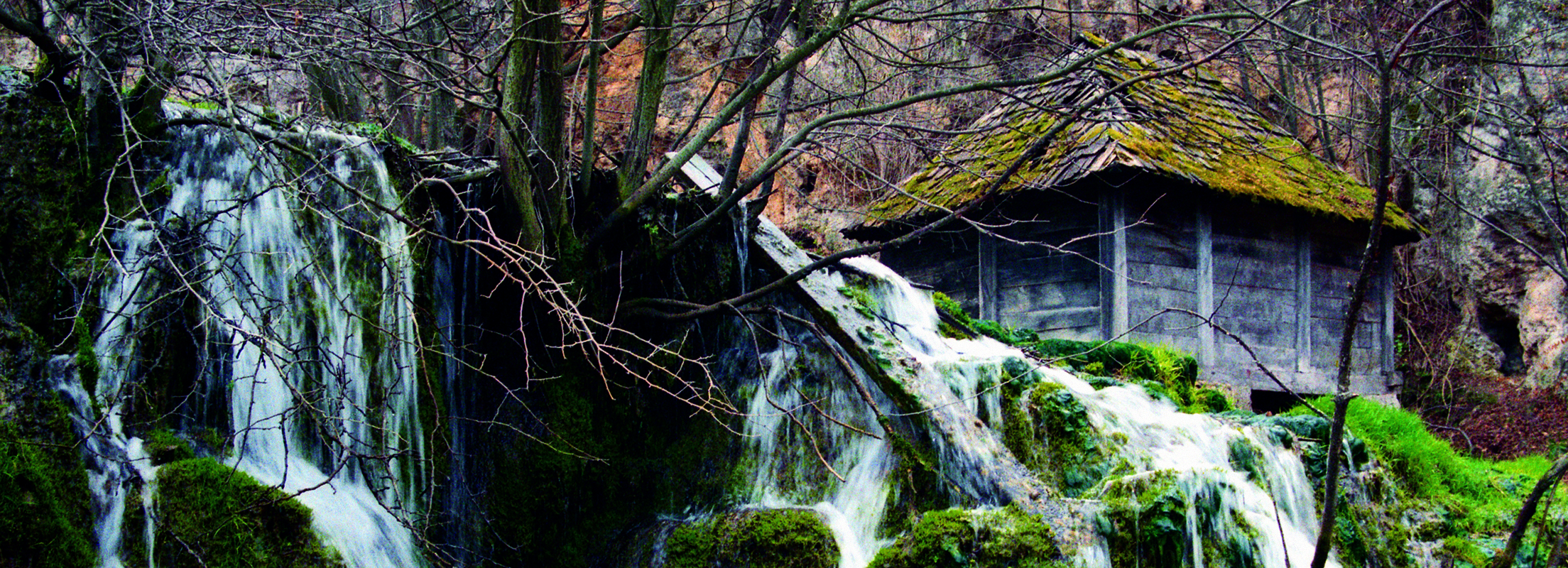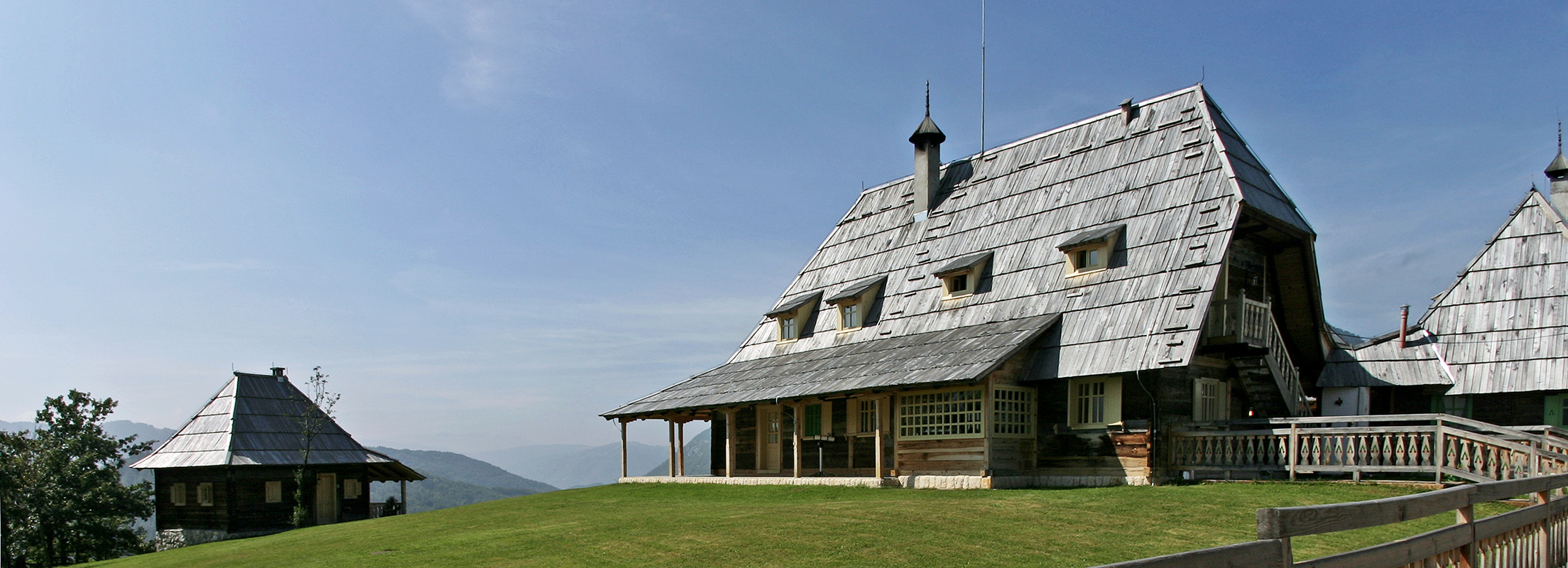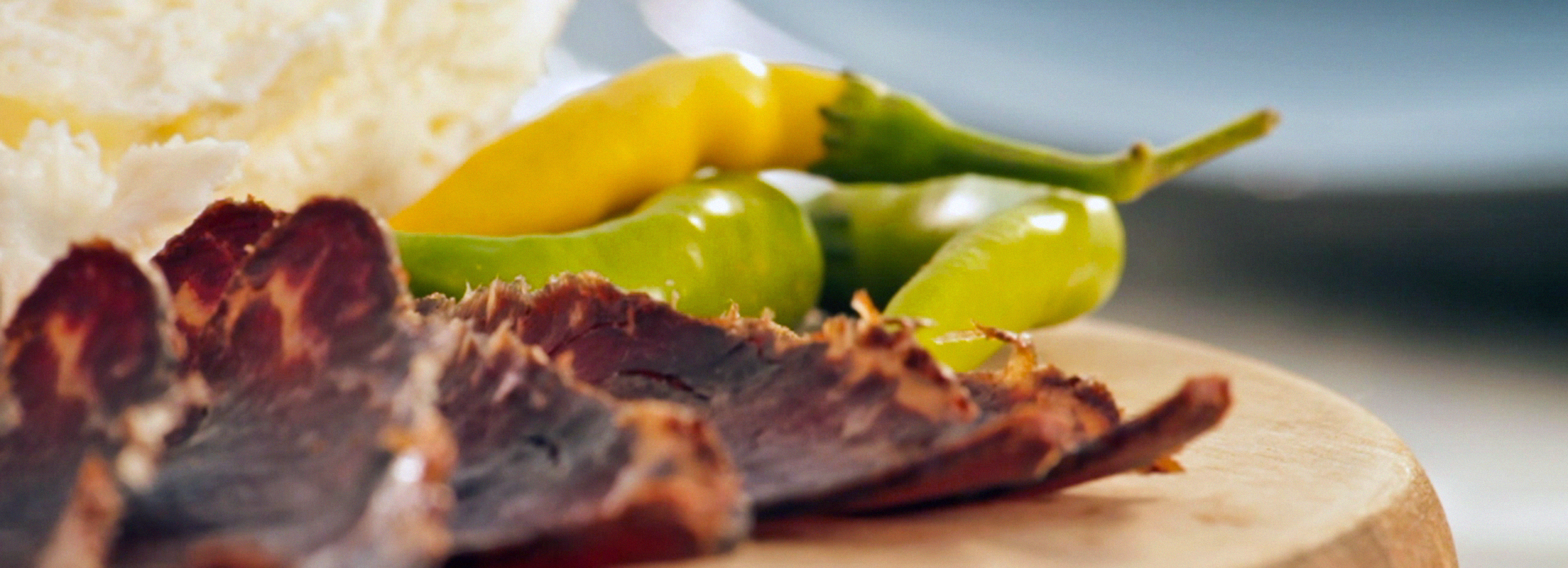

The mountains and gorges of Western Serbia are a true oasis of tranquillity and harmony. Here you can rest in the traditional wooden houses called “vajat” and log cabins, hike along mountain ranges or sail down rivers through deep canyons which stun visitors with their beauty.Walk around the raspberry farms of the Arilje region and pick the famous fruit that is exported all over the globe. Step into the thick plum orchards near Osečina or discover one of the many ethno villages scattered along the mountains of Southwestern Serbia.Whichever direction you choose, you are sure to experience a true feast for the senses!
Tara National Park is filled with natural beauty – from the thick coniferous forests to the rivers, waterfalls and the deep canyon of the Drina. In the winter the mountain’s modern ski resort attracts skiers of all ages and skill levels. And in the summertime, you can explore every corner of this beautiful mountain on its maintained hiking and cycling trails. Another interesting way to discover Tara is from the river Drina, which is ideal for kayaking and rafting, as well as fishing.
If you choose to stay at the rural households on Zlatibor mountain or in the town of Ivanjica, you will experience the many benefits offered by these two fresh air spas. If you join the herb picking tours of Zlatibor, you can learn all about the herbs used in the making of cosmetic products and teas.
The gorges on the rivers Gradac and Trešnjica attract fishermen, in their droves, throughout the year as they are ideal for fly fishing in rapid waters. Their canyons also provide the perfect backdrop for photos. Near the river Trešnjica, you can also enjoy watching some twenty couples of endangered griffon vultures.
With a vertical drop of more than 30 metres, Skakalo waterfall is one of the most beautiful landmarks of Maljen mountain. As the waterfall is on inaccessible terrain, reaching it is no small feat, but your efforts will be rewarded with an opportunity to kick back and enjoy the sonorous murmur of the cascading waterfall and the surreal splendour of the surrounding nature.
If you stay at a rural household near Divčibare, do not miss Ribnica cave, best known for being home to as many as 15 bat species.
The slopes of Zlatibor mountain hide another speleological gem – Stopića cave. As you walk along the lit footpaths inside the cave, your eyes will inevitably be drawn to the large tufa pools – recesses in stone separated by undulating stone walls which fill with water. The water then overflows from pool to pool, creating cascades and waterfalls with vertical drops as high as nine metres.

In Tršić, the birthplace of Vuk Stefanović Karadžić, the reformer of the Serbian language, there is an ethno complex comprised of 35 protected structures. Original houses, traditional wooden cabins, watchtowers, barns and a wooden church will give you a glimpse into the life of the people of this region in the 18th and 19th Centuries.
In the village of Zlakusa, near the city of Užice, you can spend your holiday in an authentic rural environment surrounded by numerous orchards, raspberry farms and blackberry farms. You can also try your hand at making pottery the traditional way.Here you can witness how the skilful hands of rural potters make vases, crocks and cooking pots out of lumps of clay, using calcite as an adhesive. The pottery of Zlakusa is held in high regard all over Serbia because of its beauty and durability. They also say that food cooked in this earthenware has a special taste.
The Open-Air Museum in Sirogojno features authentic log cabins and ancillary buildings, constructed in the 19th century, which were carried over from the nearby villages on Mt. Zlatibor. Experience the spirit of a bygone era by visiting traditional Serbian households, workshops, drying kilns, stables and sheep enclosures, while enjoying the benefits of the fresh Zlatibor air.
The tourist settlement of Drvengrad on Mećavnik mountain is an ideal combination of an authentic ambience, superb gastronomy and masterful works of art and culture. Stay at one of the Dinaric-style houses and restore your energy by treating yourself to traditional local dishes or walk along the streets and squares named after some of the world’s greatest filmmakers and actors. In January, during the Kustendorf International Film and Music Festival, Drvengrad becomes a film capital, while every June brings an opportunity to enjoy the Bolshoi Festival of Russian Music.

The region of Zlatibor has become almost synonymous with quality cured meat products. During your stay in the villages on Zlatibor you will be treated to cured sausages, cured pork tenderloin and bacon. The best-known of the dry-cured meats is the veal ham from Užice (“užička pršuta”), which has a protected designation of origin, made from pure veal cured in a beech wood fire.
To honour the delicious veal ham, a “Pršutijada” (Ham Festival) is traditionally held every year in the village of Mačkat on the slopes of Zlatibor. Be sure to visit for a taste of the dry-cured meats made by local producers.
A special place in the gastronomy of the Užice region belongs to the famous “komplet lepinja” (a flat bun with eggs), “kajmak” (similar to clotted cream) and pork dripping, which has become a staple of this part of the country.
The most famous delicacy of the Valjevo region, “tobacco” pork cracklings, is recognisable for its golden-yellow, paper-thin pieces of meat resembling tobacco. Dishes of the Ivanjica region you should make sure to try include baked potatoes filled with bacon, cheese and “kajmak”, as well as “čajce”, straight dough pastry filled with cheese and “kajmak”.
Be sure to wash it all down with “šljivovica”, the traditional Serbian alcoholic drink made of plums.
There are roughly one million plum trees in the villages around Osečina and almost every household makes their own “šljivovica” brandy, made according to the traditional recipe, as well as jams, fruit preserves as well as prune or plum cakes.
The rural households in the Arilje region are among the world’s largest raspberry producers. Raspberries from this region can be found on dining tables all over the world, however here you will have the opportunity to taste them when freshly picked. You will also be treated to many delicacies made with raspberries, including raspberry cakes, chocolate-coated raspberries and raspberries in honey.
